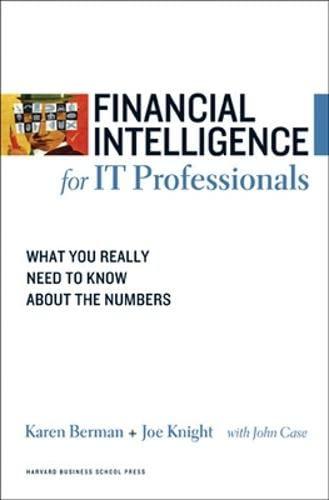Answered step by step
Verified Expert Solution
Question
1 Approved Answer
8. Let us consider a model where we want to explain whether a married woman works for wages or not. We may define the dependent

8. Let us consider a model where we want to explain whether a married woman works for wages or not. We may define the dependent variable paid to equal 1 when the woman works for wages, and zero otherwise, and consider the model paid = ao+anwifeinc + aeduc + a3exper+ a exper + u (8.1) where nwifeinc is other sources of income (in $000), educ is years of education, and exper is past years of labour experience. You may assume that E (ulnwifeinc, educ, exper) = 0. (a) (2 marks) Provide an economic interpretation of the parameter 2. What should be the sign of a2? (b) (3 marks) What would happen to the parameter estimates if the qualitative outcome was coded differently, in particular: paid* = 2 if married woman works for wages = 1 if married women does not work for wages, and the following regression was estimated by OLS paid* = a + ainwifeinc + a2educ + aexper+ajexper + u*. (8.2) (c) (6 marks) Discuss why the following statements are False. Suggest suitable changes that will make the statements correct. Details supporting your claims will be rewarded. (i) The R-squared obtained from the OLS estimation of (8.2) is larger than the R- squared obtained from the OLS estimation of (8.1). (ii) To test whether the non-education variables (nwi feine, erper, erper) are jointly significant in (8.1), we can use the usual F-test that compares the restricted and unrestricted residual sum of squares. (d) (7 marks) Instead of using OLS, a researcher proposes we should use the Probit model. Introduce the model and discuss the benefits and drawback of using this approach. In your answer you are expected to provide the main equation underlying the Probit model and the log-likelihood function. (e) (2 marks) Discuss the following statement: "A probit model that uses un feine, educ, erper, and exper to explain whether a married woman works for wages or not, will exhibit diminishing effects of additional years of education on the probability of work- ing for wages." In your answer clearly indicate how to obtain the partial effect under consideration. 8. Let us consider a model where we want to explain whether a married woman works for wages or not. We may define the dependent variable paid to equal 1 when the woman works for wages, and zero otherwise, and consider the model paid = ao+anwifeinc + aeduc + a3exper+ a exper + u (8.1) where nwifeinc is other sources of income (in $000), educ is years of education, and exper is past years of labour experience. You may assume that E (ulnwifeinc, educ, exper) = 0. (a) (2 marks) Provide an economic interpretation of the parameter 2. What should be the sign of a2? (b) (3 marks) What would happen to the parameter estimates if the qualitative outcome was coded differently, in particular: paid* = 2 if married woman works for wages = 1 if married women does not work for wages, and the following regression was estimated by OLS paid* = a + ainwifeinc + a2educ + aexper+ajexper + u*. (8.2) (c) (6 marks) Discuss why the following statements are False. Suggest suitable changes that will make the statements correct. Details supporting your claims will be rewarded. (i) The R-squared obtained from the OLS estimation of (8.2) is larger than the R- squared obtained from the OLS estimation of (8.1). (ii) To test whether the non-education variables (nwi feine, erper, erper) are jointly significant in (8.1), we can use the usual F-test that compares the restricted and unrestricted residual sum of squares. (d) (7 marks) Instead of using OLS, a researcher proposes we should use the Probit model. Introduce the model and discuss the benefits and drawback of using this approach. In your answer you are expected to provide the main equation underlying the Probit model and the log-likelihood function. (e) (2 marks) Discuss the following statement: "A probit model that uses un feine, educ, erper, and exper to explain whether a married woman works for wages or not, will exhibit diminishing effects of additional years of education on the probability of work- ing for wages." In your answer clearly indicate how to obtain the partial effect under consideration
Step by Step Solution
There are 3 Steps involved in it
Step: 1

Get Instant Access to Expert-Tailored Solutions
See step-by-step solutions with expert insights and AI powered tools for academic success
Step: 2

Step: 3

Ace Your Homework with AI
Get the answers you need in no time with our AI-driven, step-by-step assistance
Get Started


